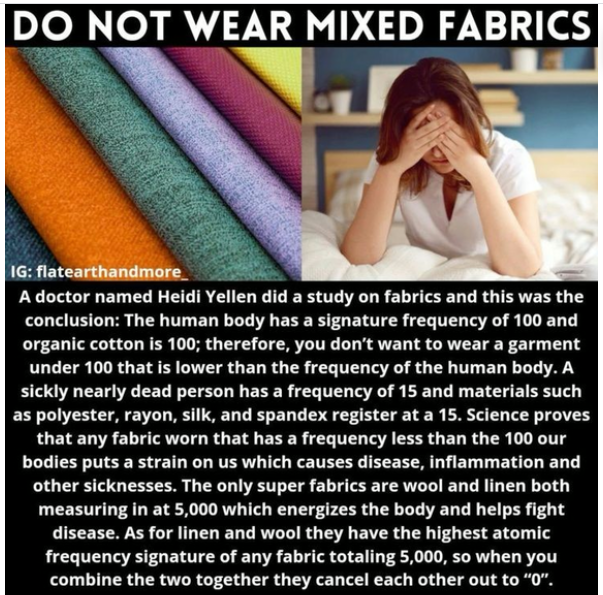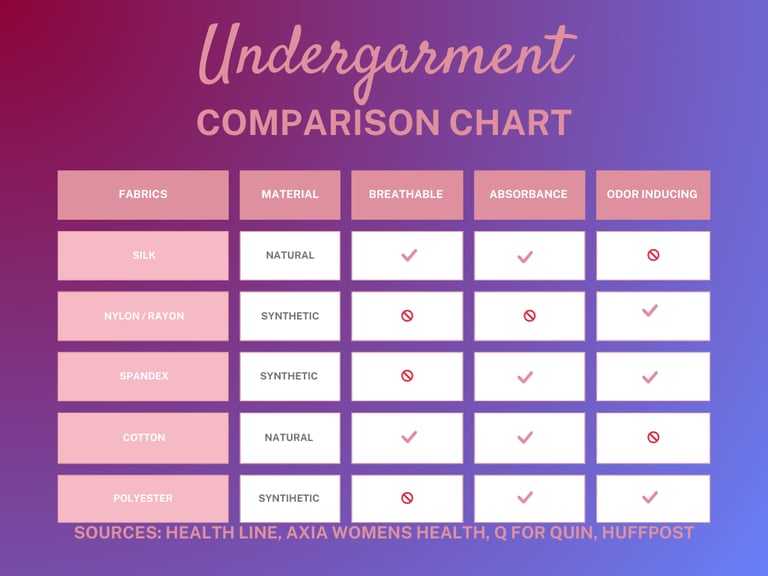
About Fabric's Material
2 min read
We often focus on diet, exercise, and lifestyle choices. But don't nobody pay attention to the fabrics that we wear. Yup, our threads have a significant impact on our well-being. In this article, we will explore the disruptive effects of wearing the wrong kind of fabrics on women's health and how choosing the right fabrics can make a difference in our temperament. Read on....
Fabric and Women's Health:
From the clothes we wear to the bedding we sleep on. The fabrics we choose can directly affect our skin, body temperature, PH balance and overall comfort. But what many women may not realize is that certain fabrics can also impact their health in more ways than one.
One particular fabric that has gained attention for its healing properties is linen. Linen is a natural fabric that is known for its breathability, moisture-wicking properties, and ability to regulate body temperature which is important. Trapped moisture is practically the leading cause in booty skin flare-ups and scalp irritations. So, it would be wise to ditch the wigs and skin tight jeans. According to a study by Manufacture Delin, linen fabric helps improve blood circulation, reducing stress, and promoting better sleep. Additionally, linen is hypoallergenic, making it an ideal choice for women with sensitive skin or allergies. Especially down there...




Another important factor to consider when choosing fabrics is the impact they have on our environment and health. All those synthetics, like polyester and nylon, are made from petroleum-based chemicals and have been linked to many health issues as mentioned before, the skin irritations, respiratory problems, and hormonal imbalances. And don't even get me started on bras! Those underwire metals aren't always steel (steel alone isn't harmful), and bra manufacturers coat them in a film of nylon thus making them.....you guessed it: harmful. Now, all these materials also contribute to environmental pollution and are not biodegradable, adding to the global plastic crisis. That's another issue altogether.
On the other hand, natural fabrics like cotton, silk, and bamboo are not only gentle on the skin but also more environmentally friendly. Organic cotton, in particular, is grown without the use of harmful pesticides and chemicals, making it a safer and healthier option for both the wearer and the planet.
So, what can women do to make better fabric choices for their health? Start by paying attention to the labels on your clothes and opt for natural, organic fabrics whenever possible. Look for certifications like GOTS (Global Organic Textile Standard) or OEKO-TEX, which ensure that the fabrics are free from harmful substances. Additionally, consider supporting sustainable and ethical fashion brands that prioritize both human health and the environment.
In conclusion, the fabrics we choose to wear can have a significant impact on our health and well-being. By making conscious choices and opting for natural, organic fabrics, women can not only improve their own health but also contribute to a healthier planet. So, next time you go shopping for clothes, remember to consider the fabric and its effects on your health. Your body will thank you for it, believe you me!
